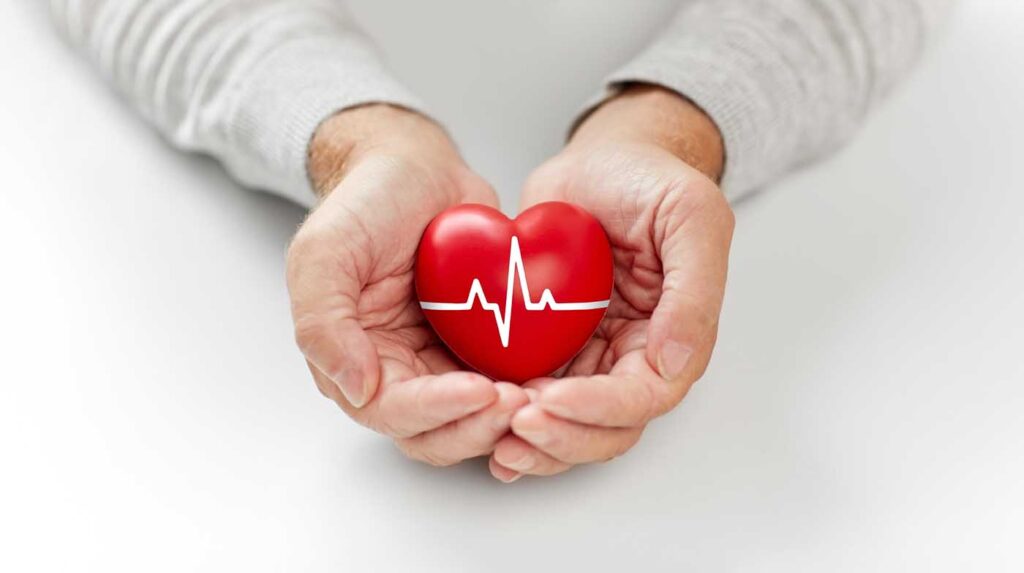Before its new name and a move across the highway, Intermountain Health Lutheran Hospital started as a tuberculosis treatment center in 1905.
By the 1970s Lutheran built a six-floor tower that welcomed more patients to the hospital. Dr. Gary Hahn in 1974 and Dr. Charlie Lesage in 1971 were the first cardiologists at Lutheran.
By the late 1970s Cardiologist Dr. Timothy Leavitt and Cardiothoracic surgeon Dr. Edwin Lance Walker joined the department. Over ten years into their retirements now, these integral members of the cardiologist department reflect on developing the program during their careers at a growing hospital.
Although the cardiac department was expanding, Lutheran didn’t have a catheterization lab or a cardiac surgery program at the hospital when its founding doctors started their private practices at the hospital. This forced cardiothoracic surgeons like Leavitt to travel to other hospitals for surgeries.
“That’s an extra workload on the cardiologist,” Walker said. “Instead of taking care of people in-house here, they had to go to another hospital.”
Cardiologist Dr. Jerry Miklin, who still works at Lutheran, joined the department in 1983.
Both Leavitt and Walker learned from cardiology pioneers during their time at medical school.
Leavitt remembers taking courses and conferences at Emory University Hospital under Andreas Grüntzig, the first cardiologist to develop a successful balloon angioplasty in 1977.
The first time Walker encountered heart surgery was in medical school. He, along with 28 other people, witnessed the first cardiac angiogram performed on a person during his time attending the University of North Carolina Medical School.
“Everybody was afraid that the patient was going to die,” Walker said. “They had a defibrillator the size of a Volkswagen. When that paper came out, then all of a sudden this was a whole new world of cardiac surgery. It supported hospitals getting cath labs and surgery. Before there wasn’t that much need for it.”
In response to the pioneering procedures developing in the field, hospitals around the country built cardiac programs using these medical advancements.
By the 1980s Lutheran was most well known for its orthopedic department or the general surgery department, Leavitt said. Members of the growing cardiology department pushed the hospital administration to build a cardiac catheterization lab and a cardiac surgery program.
“It’s so much better for the patient and the doctors to have a heart program and a cath lab at Lutheran,” Leavitt said.
With the approval of a board, Leavitt became the director of the cath lab and travelled around the country interviewing and studying other cardiac programs. Inspired by the cath lab at Abbott Northwestern Hospital in Minneapolis, Minnesota, the cath lab at Lutheran started in the late 1980s. Walker also performed his first open heart surgery at the hospital around this time.
Nursing supervisors like Jeannie Everett supported building the cath lab from her experience building cath labs at other hospitals. The cardiovascular and x-ray tech, who served in nursing supervisor positions, worked in Lutheran’s cardiology department for another 30 years after starting the cath lab.
In its early years the cardiac department opened arteries with balloon angioplasty procedures. The department policy mandated two cardiologists sit in the cath lab.
“We didn’t mind that because if we got called out of the office to come to the cath lab to open up an artery,” Leavitt said. “That was exciting for us. We’d rather be in the cath lab than in the office at any time,”
If balloons and stents were unsuccessful during the procedure Dr. Walker and his group were on standby.
“Dr. Walker’s group was just fantastic in backing us up, fantastic when we did a heart catheterization and found that we should not put in stents,” Leavitt said. “The patient might be too complicated for just putting in stents, and they needed bypass surgery.”
Although some cardiac programs across the country were busy competing for publishing papers about accomplishing cardiac advancements, the cardiac department at Lutheran remained focused on patients.
“We weren’t an experimental cardiac lab,” Walker said. “We were more related to patient care. And truly, if you interviewed me 15 years ago and asked me why you’re here, it’s patient, patient, patient, patient. If the patient comes first, everything works out.”
Walker remembers practicing surgery before the time of corporate medicine, when individual practitioners built the cardiac department. Walker has always declined knowing the financial status of patients and preferred updating the patient’s family after surgery to updating post-op orders.
By the 1990s, a new stent technology was developed, which reduced the rate of coronary artery bypass surgery. By the late `90s the drug eluting stent lowered the chance of restenosis even more to three to five percent.
By the 2000s Lutheran’s cardiac department became highly successful at offering the standard of care practice of opening a heart attack patient’s artery within 90 minutes of the patient hitting the emergency room door, Leavitt said.
“Lutheran became so successful at meeting that number with tools in place like an interventional cardiologist on call at all times,” Leavitt said. “If the EKG indicated a heart attack the cardiologist was called immediately and was taken to the heart lab.”
The cardiac department began putting stents in emergent heart attack victims at the cath lab.
“I think that dramatically changed the history of Lutheran, and the history of heart disease in the world,” Leavitt said. “Before the 1960s, a person would come into the hospital with a heart attack and have to be in the hospital for two or three weeks. The only treatment we had then was a cold washcloth on the forehead, morphine, and oxygen.”
Leavitt, Everett and Walker all retired around ten years ago. They saw the progression of Lutheran’s cardiac department, and the field, over the duration of their careers.
“We grew so much in all the different kinds of procedures we were able to do that didn’t exist when we first started,” Everett said.
She remembers milestones of the program, as it eventually grew to offer multiple cath labs. Another highlight in her career was working with neurosurgeons visiting the cardiology department from other hospitals.
The current cardiology program at Lutheran now offers electrophysiology, explores biodegradable stents, performs chronic total occlusions and explores peripheral and carotid artery procedures.






